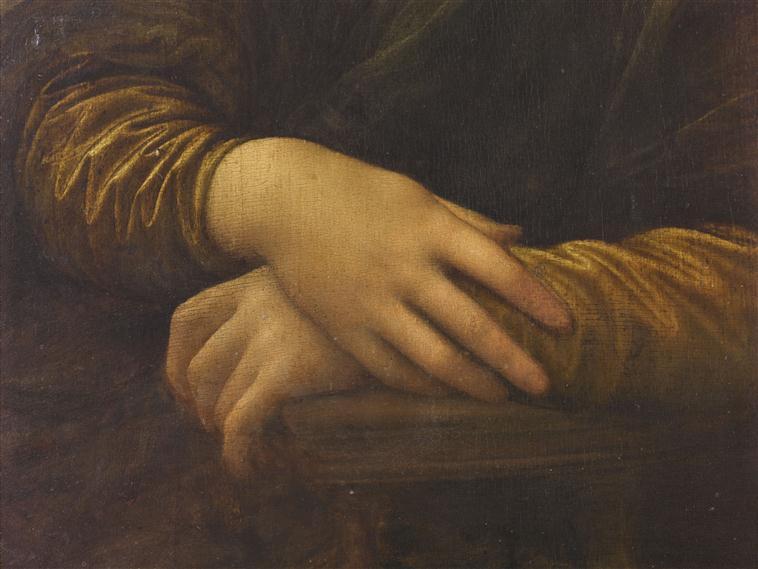By Jennifer Giovannucci
The mystery of The Mona Lisa is as much in her hands as in her smile. The iconic head and shoulders will always be in style, but a whole world opens up when hands are included. Understandably, many bourgeoning portraitists are intimidated. Who among us hasn’t come up with ingenious ways to hide hands… in pockets, under scarves, behind backs even just putting them outside the picture frame! But when we limit ourselves in this way, we miss out on one of the most interesting and expressive aspects of the human form. The following are some steps that I hope encourage the budding portraitist to dive in and celebrate the amazing and truly unique human hand!
- Block out the Hand. Before drawing any detail of the hand, break it down into basic three-dimensional geometric shapes being sure to integrate the wrist. Be aware of how the shapes line up in space i.e., what shape is in front of and therefore overlapping another. Then determine the direction of the light and block in the shadow.
- When rendering the hand use techniques that describe form. The hand is small, detailed and complicated. When deciding what details to include, think a little less about copying what you see and more about understanding what you see. If there is an odd reflection or haphazard shadow, don’t include them unless there is a compelling reason. Choose instead to emphasize simple descriptive information and bolster the effect with the use of solid techniques. For instance, one might utilize core shadow to simply and accurately describe the form. One could also emphasize harder edges and stronger contrast on the parts of the hand closer to the viewer, allowing things to soften as they recede into space. Do whatever can be done to simplify and inform to help create the sense of an object in space.
- Pay attention to the posing of the hand. Hands are a lot like eyes and mouths in that we can watch a person talk and gesture and see nothing but grace. But when we try to capture the moment on film, we are confronted with blinking eyes, mouths halfway between words, and hands that are often so awkward as to be hardly recognizable as hands at all! For this reason, beware the favorite snapshot reference for a portrait with hands. When taking your own photos, take a lot of images and be sure that they include some good shots of the hands. Even if the eyes are blinking, keep those pictures, they will become your very best friends! When working from life, pay attention to the positioning and lighting of hands. If your sitter is nervous or bored, it will reflect in their hands. Be prepared to gently remind them to relax and reposition.
- Study the anatomy of the hand and forearm. Familiarity with the bones, tendons, musculature, and fat pads of the hand allows us to understand what we are looking at and enables us to more faithfully draw what we see. Bones and tendons are evident on the top of the hand, fat pads are on the palm and underside of the fingers.
- Have fun!

About the author: Jennifer Diaz Warner Giovannucci is a portrait artist living in Waterville OH who teaches anatomy workshops and produces artistic renderings for scientific journals. She enjoys the bridge between art and science that is such an important part of portraiture. Jennifer’s formal artistic training began at the High School of Music and Art in New York City and was awarded full scholarship to Cooper Union Fine Arts Program. In addition, she studied life drawing at the Art Students League of New York, École des Beaux Arts in Paris. Ms Giovannucci’s portraits have been exhibited nationally and collected nationally. All illustrations in this article were created by Jennifer for a PowerPoint she uses when teaching. www.jennifer-giovannucci.squarespace.com
The featured image (above the article) is a detail of The Mona Lisa’s hands by Leonardo da Vinci – Louvre, Paris




